Romantic Watercolor Florals
This week is about red, pink, sugar, and cream – so, romantic watercolor florals!
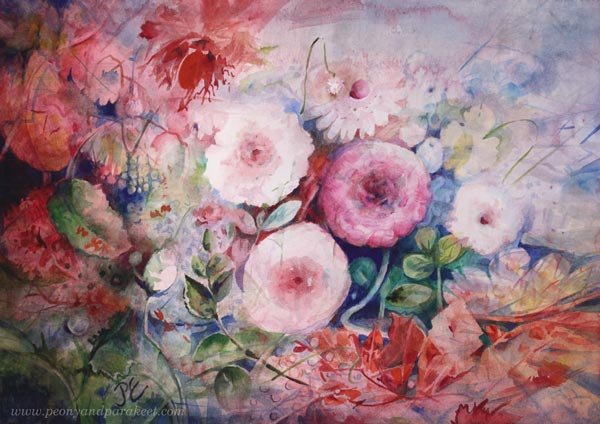
I had a break from watercolor painting for a long time, but in the summer I started again.
Romantic Flowers and Chicklit
In summer, I had all kinds of complicated ideas for a new course, but my inner voice said:
- – What if we take out the watercolors and do something that hasn’t been done in a long time?
– Can I be a romantic?” my artist-me asked my educator-me.
– You can be as romantic as you want, as long as you work systematically and understandably, she said.
When the camera turned on, a short “Yippee!” went up inside me. Freely Grown was born, but watercolor painting didn’t stop there. I had been dreaming for a long time that I could do something lighter – like the writer Rachael Herron, who wanted to start her career with a profound book, but ended up writing a chick-lit novel. He noticed that chick lit is surprisingly challenging and realized that every genre of literature has its own difficulties.

Watercolor Flowers like Sweet Desserts
I’ve learned a lot of painting techniques with watercolors in the past and it can certainly be seen in my oil paintings. But in the summer I started to be interested in what I had learned while painting with oils and whether I could do vice versa – so, use it in watercolors.
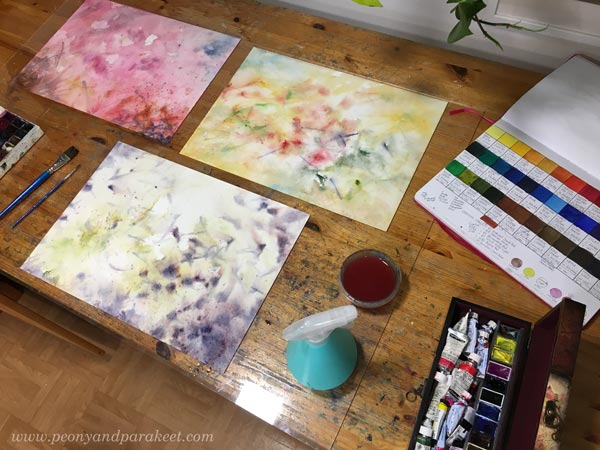
Now I didn’t want to do anything hugely abstract, but sweet flowery paintings. The kind that, if they were food, would have a lot of sugar and whipped cream in them.

An artist should probably only do fine dining, but this has started to resonate with me and it has also been nice to notice that there is a demand for it.
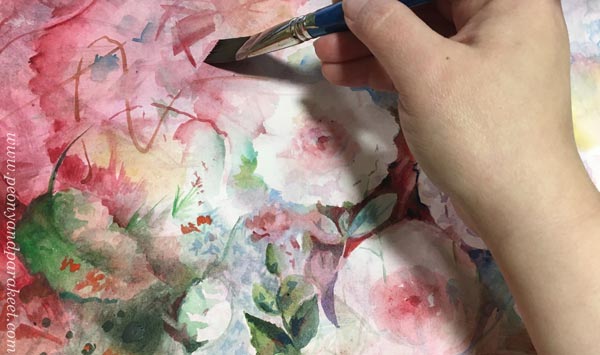
Even now, I’m making a small series for a gallery.
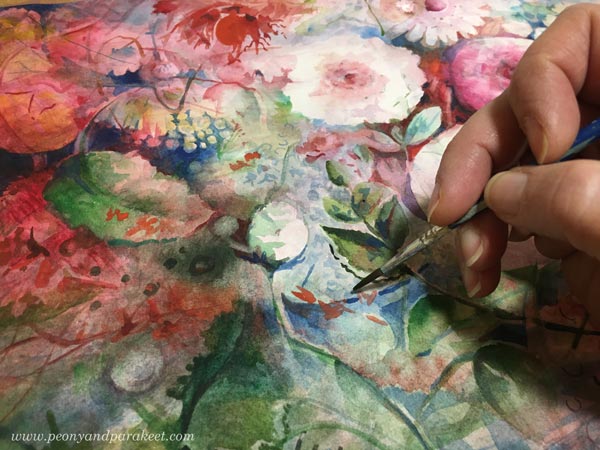
Those Who Won Winter
This red-hued Talven voittaneet is the first for the series of four. The name would be translated into English as “Winners of Winter” but it is not quite the same. The Finnish version is closer to the expression “those who won winter.”

My favorite part of this painting is unexpectedly the bottom right. I often leave the edges pretty undefined, but here the bottom part plays a key role. It has melting ice from which the flowers rise.

Imagine flowers winning the winter with their warmth – isn’t it such a lovely thought! I have really enjoyed making these kinds of romantic watercolor florals.
Flowers and Gala
This week has been busy. I already received a grant from the city of Vantaa in the summer for my early autumn art exhibition, but it was celebrated only last Wednesday when the city organized a cultural gala.

It was nice to be surrounded by respected colleagues. In the picture, a councilor Lasse Norres representing the city congratulates the visual artists. Päivi Allonen and Satu Laurel also received a grant and are there on the stage with me. They have wonderful paintings and I highly respect them both.

Have I mentioned that I love flowers? I think if you’ve been following me for even a little while you know that!
Romantic Watercolor Florals
At the moment, my small studio is a flower painter’s heaven and the flowers have free access there, even if I don’t use them directly as models. The flowers of my inner world may resemble the flowers of the outer world, but they have their own romantic life.
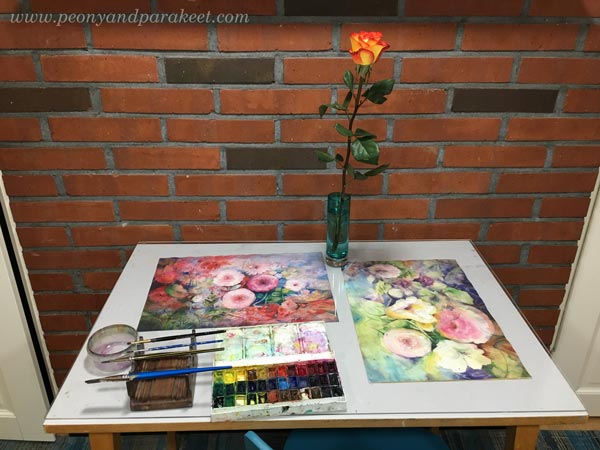
Nice creative moments for your weekend!
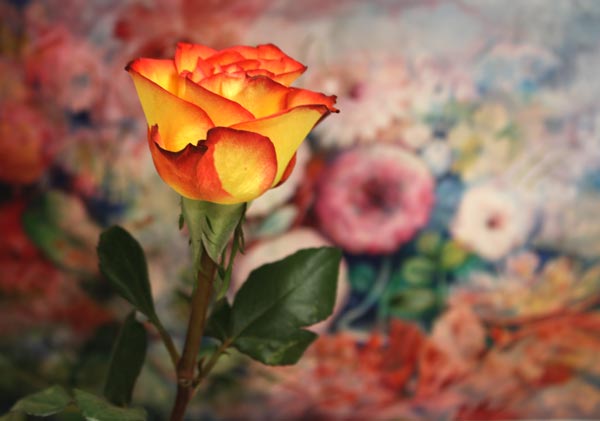
Pleasures of Watercolor Painting
This week is about watercolor painting and the pleasures that can be found there!

Getting Inspiration
Now I’ve been busy with a lot of different things – a new big art project, the new course Freely Grown, commissioned work, etc. Despite that, I stole some time and went to look at old paintings online – skillfully painted portraits of women in fancy dresses. They always make me want to paint, even though I prefer to paint plants and flowers instead of beauties.
Look at this painting of the Duchess Alexandra Iosifovna, painted by Franz Xaver Winterhalter in 1859!
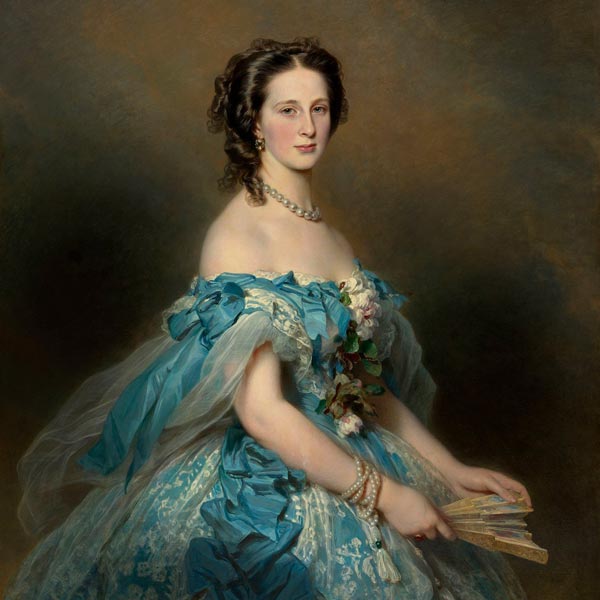
A detail – only a part of the painting is in this image.
The colors, the brilliant brush strokes, and all the delicate and decorative details are so inspiring!
I used to think that inspirational images must be the same as what I want to paint next. So, if I wanted to paint flowers, then I would only look at flower paintings. But nowadays, I love to be inspired by something different. Then the inspiration doesn’t limit me. It doesn’t depict what I should do and how, but sets an atmosphere that I want to follow.
Love for Good Watercolor Paper
After getting inspired, I opened the closet of my studio, as if secretly from myself, and tore a clean sheet from the watercolor paper pad.
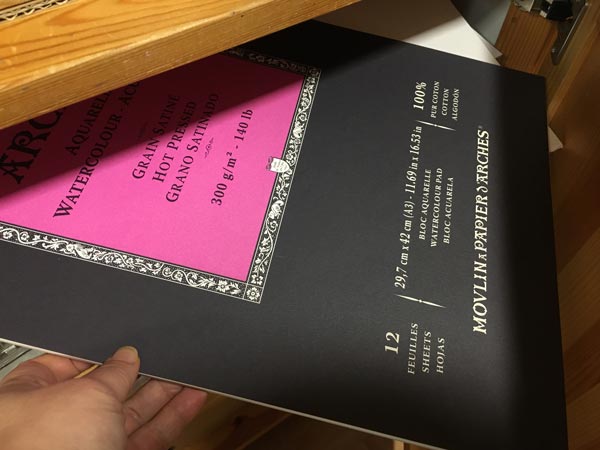
One hundred percent cotton, aah! So soft, thick, and ready to receive color. Good paper is expensive, but I paint better when I know in advance that I don’t want to waste a sheet.
Painting and Doing Other Stuff at the Same Time
When I steal time to paint, watercolors are an easy choice. Especially in the beginning, I can do one coat quickly and then let it dry for hours while I do other work.
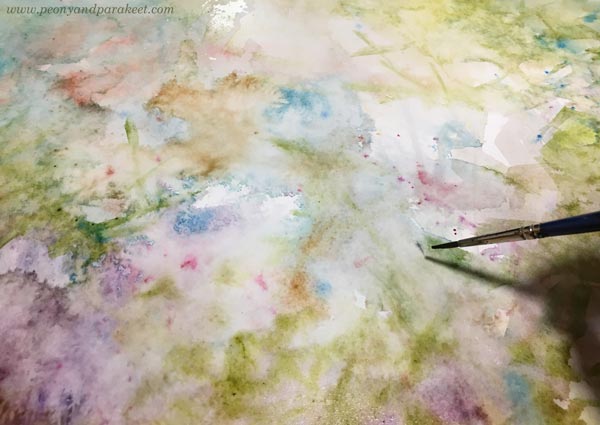
I can add details little by little, and the pauses often just clarify the idea of the subject of the painting. And when you paint slowly from light to dark, you can always fix it with the next layer.
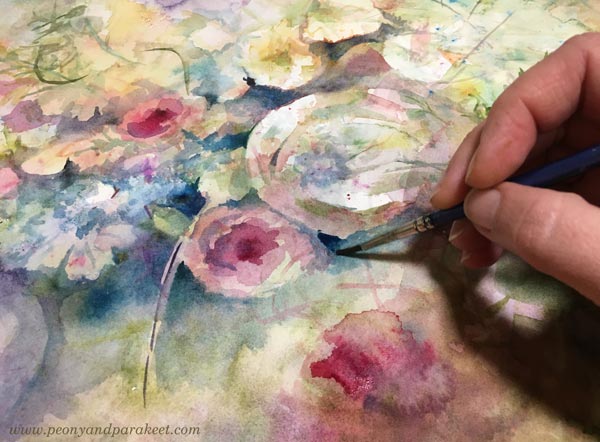
I often have my iPad nearby and listen and watch something at the same time while I paint.
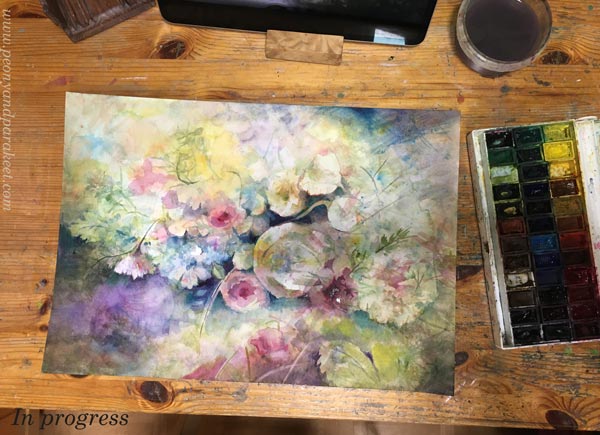
Luxury Combined with Minimalism
When finishing, it’s pleasurable to take just a little color on the brush, and often near the pan, if it has spilled there. I also check the corners of the palette, where unused paint easily remains. When the color is activated on paper, even a small amount becomes a treasure and an experience!
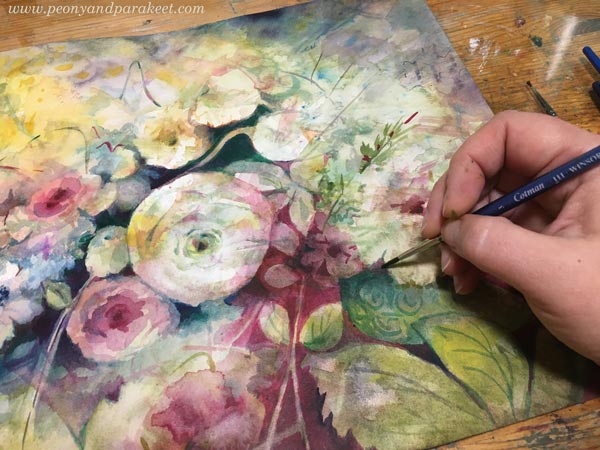
I always buy good artist-quality watercolors one pan and one tube at a time and use them right up to the end. If I buy a tube, I squeeze a small amount into a pan to dry and this way, use the tube in small portions. I love this kind of union of luxury and minimalism – definitely one of the pleasures of watercolor painting to me!

Finally, I wash the brushes carefully. Washing with water is enough for most brushes, but I often use soap to make sure that all the color has come off. With clean brushes, it’s nice to start a new painting again when I find time.
From Detail to Detail
Here are some pictures of the details.

I like to paint a lot of subtle details, and I love the warmth that yellow has.

Signing the piece before the final finishing touches makes sure that the signature fits with the rest of the composition.

I hope this blog post inspired you to pick watercolors and paint freely!
P.S. Freely Grown – You can still hop in!
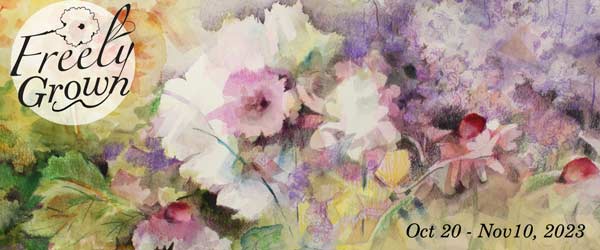
Freely Grown Begins Soon!
This week is dedicated to the launch of the new course, Freely Grown!

I always run the first launch of the new course in many parts and as a community experience.
Freely Grown will begin on Friday, Oct 20. Sign up Now!
Watercolor Flowers in Louisa M. Alcott Style
This week, I talk about Louisa M. Alcott’s characters and painting flowers in watercolor.

They say that nature should not be humanized, but when I paint flowers, I do that without hesitation.
Splashes Start an Adventure
I love getting to know my flowers little by little. Their life begins with random splashes and I try to grow them as freely as I can.
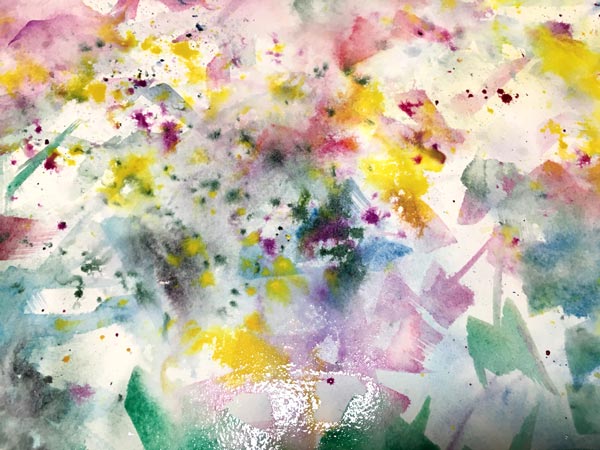
At its best, a painting is like a good book that hooks you into the atmosphere and cannot be left unfinished. It’s always exciting to see what kind of characters turn out on paper and what happens to them.
Little Women by Louisa M. Alcott
In this painting, the big peony was born first. She is a girl who is sure of her position, but always ready to hug and strengthen others as well. I was reminded of the novel Little Women by Louisa M. Alcott. Could that peony be like Meg, the big sister of the family?

And could there be Amy next to her, a growing beauty and sometimes a bit self-centric too?
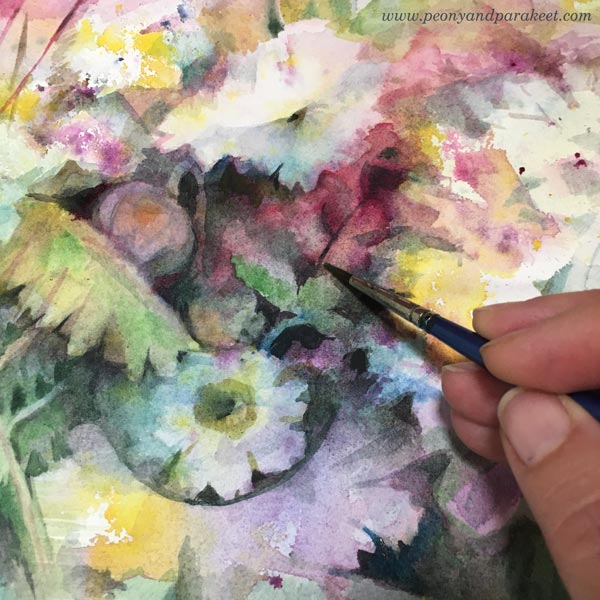
Right below white and glamorous Amy, there’s sweetly round Beth who left this world far too soon.
Painting the Atmosphere
When the watercolor wets the thick cotton paper, I would like to invite you to my little studio and give you a thin brush. Together, we would then paint small shapes like writers working on a common story.

However, as everything in flowers does not have to be literal or recognizable, we could just focus on the atmosphere.
Jo the Tulip
The key figure in my painting is the tulip in the background. He is like Jo, unique and more modern than others, ready to create her life joyfully, but without being forced to the center of the painting. I admired Jo as a child, and it has taken me a long time to dare to be like her – step aside and do my own thing.

Somehow I also think that when you come to my course, you too want to be like Jo – do your own thing, express the flavor of life, embrace the abundance of nature, and allow unapologetic playfulness.
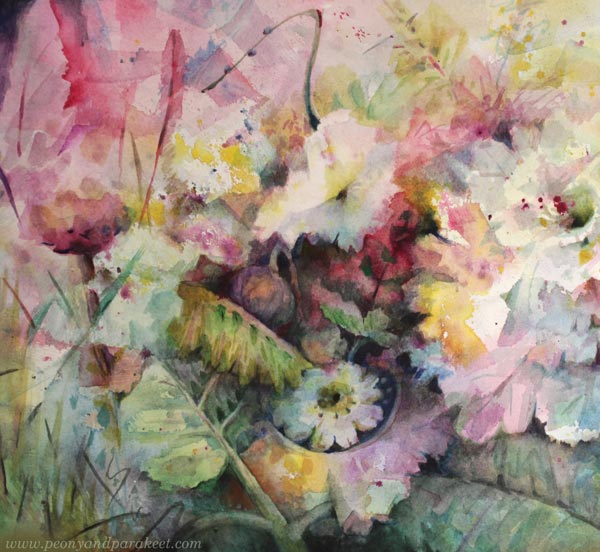
Freely Grown – Sign Up Now!
The course Freely Grown starts next week. I can hardly wait for it to start – join me!

Freely Grown >> Sign up here!